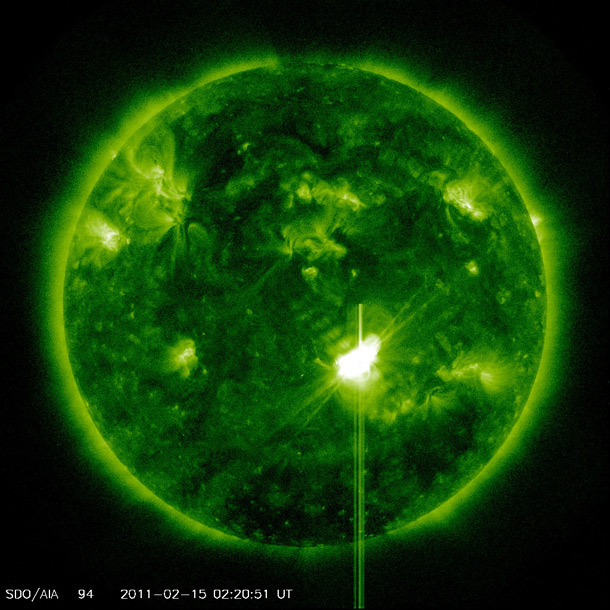Over the past few days, the Sun has been pretty active, especially one region, sunspot 1158: it produced two strong solar flares in the last four days.
A solar flare is a large explosion in the Sun’s atmosphere, releasing up to approximately 16% of the total energy output of the Sun each second. Electrons, protons as well as ions are accelerated at speeds near that of light. Solar flares produce radiation, at all wavelengths and can sometimes affect our satellites and disrupt long-range radio communications. They are due to a phenomenon called magnetic reconnection (the rearrangement of magnetic lines of force when two oppositely directed magnetic fields are brought together), suddenly releasing energy stored in the corona.

On Sunday February 13, sunspot 1158 produced an M6.6-level (see here for details) blast and on Tuesday, February 15, the same sunspot unleashed an X2.2-level flare (about three times stronger than the previous one), the strongest solar flare in more than four years. The sunspot was not even here a week ago, and it is now covering an area wider than Jupiter.
As I mentioned above, some strong solar flares (even much stronger than these two) may only temporarily affect satellites, but that’s about it, there is no danger for us.
If you happen to be living at extreme latitudes, you will likely be able to enjoy a few aurorae over the next couple of nights (today, NOAA forecasters estimate a 35% chance of geomagnetic activity). If anyone has the chance to witness one of these and takes pictures, feel free to send them, and I will create a reader gallery!

